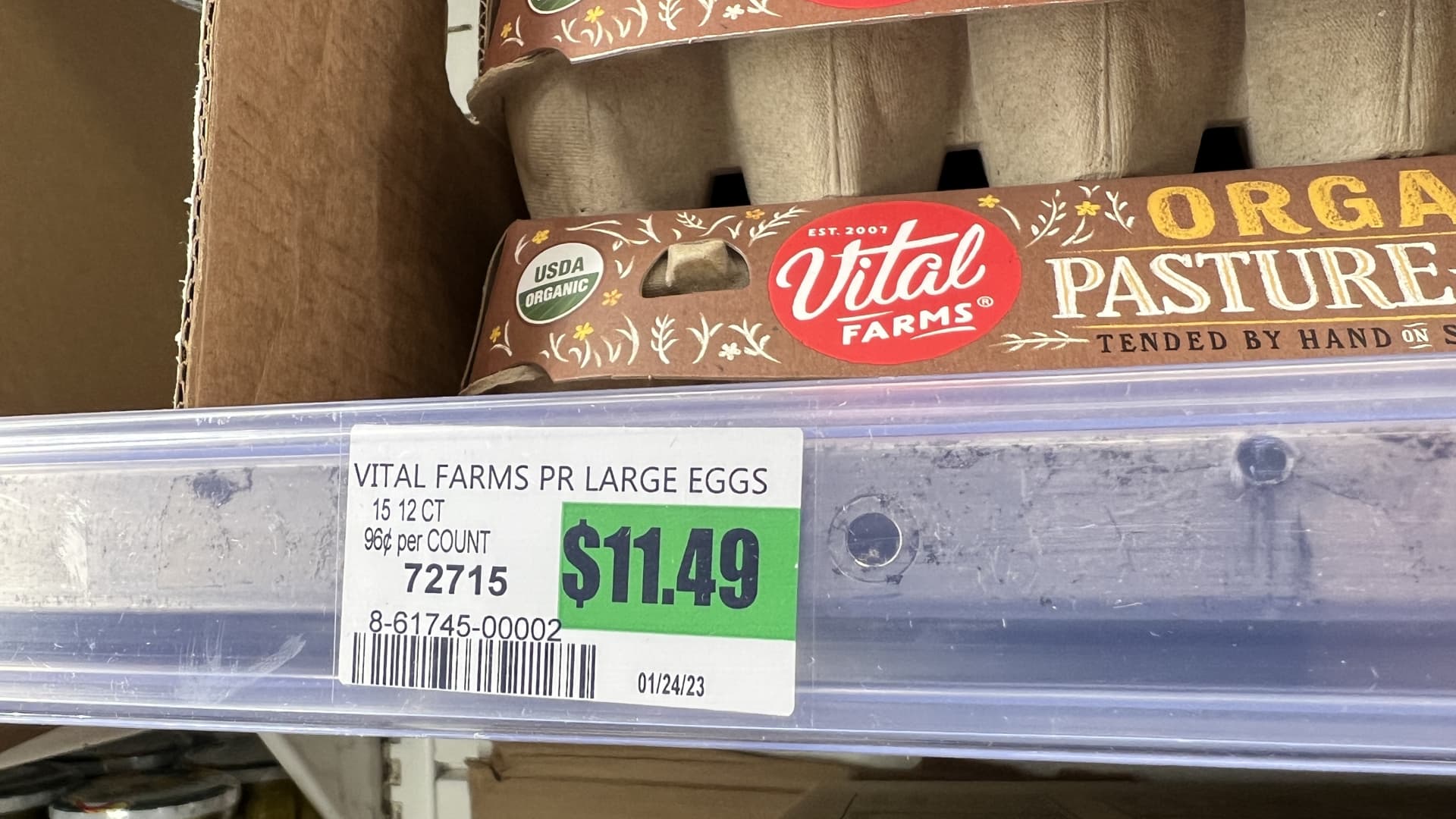A new U.S. government reading showing persistent high inflation rattled Wall Street on Friday.
Consumers can expect the rate of price growth will likely stay higher than average through 2023.
“Inflation is going to come down gradually, if the Fed conducts policy the way it says it intends to,” said William Luther, director of the American Institute for Economic Research’s Sound Money Project.
“We’re looking at higher than normal price increases, certainly through 2023 and probably through much of 2024, as well,” Luther said.
More from Personal Finance:
Federal ‘baby bond’ bill would give kids $1,000 at birth
Colleges to close even as top schools see application boom
How to access IRS transcripts for a faster refund
The Federal Reserve’s preferred measure for inflation, the personal consumption expenditures price index, showed headline inflation rose 5.4% from a year ago as of January and 0.6% for the month. Core inflation excluding volatile food and energy prices increased 4.7% and 0.6% for the month.
Declines in inflation that have happened since June actually reversed in January.
“It’s possible that this is just a blip, that we had more price increases in January and fewer price increases in December,” Luther said.
Earlier this month, the consumer price index, a separate government measure, also showed higher than expected inflation for January, with a 6.4% gain over 12 months and a 0.5% increase for the month.
While the inflation rate is poised to subside this year, “it will not be a straight line,” Raymond James chief economist Eugenio Aleman told CNBC.com at the time.
The Federal Reserve is tasked with getting inflation under control, while trying to avoid a deep economic recession.
What the latest inflation measure shows
The personal consumption expenditures price index, or PCEPI, is the central bank’s preferred measure as it seeks to bring inflation down to a 2% target.
There are two reasons why the PCEPI may be a better measure than the CPI, according to Luther.
First, the PCEPI measures all consumption expenditures, including those that are not coming directly out of consumers’ discretionary income, such as those made on their behalf by the government or employers.
“It puts more accurate weights on the categories of expenditures that are being made in the economy by consumers,” Luther said.
We’re looking at higher than normal price increases, certainly through 2023 and probably through much of 2024, as well.William Lutherdirector of the American Institute for Economic Research’s Sound Money Project
The CPI, on the other hand, only looks at a basket of goods purchased from individuals’ discretionary incomes. Moreover, the basket of goods the CPI tracks is updated every year, while the PCEPI gets updated each month.
That really matters in cases where you have some individual prices that are changing a lot, according to Luther.
More interest rate hikes ‘almost a certainty’
The Federal Reserve has undertaken a series of interest rate hikes to tamp down inflation.
Based on Friday’s data, it’s “almost a certainty” the central bank will raise rates by 25 basis points in March, and maybe even higher, Luther said.
“If we continue getting these high inflation readings, it will have little choice [but] to go even further,” Luther said.
Prices will not come down
As the Federal Reserve brings inflation down to a 2% target, prices will still continue to grow, albeit at a lower rate, Luther noted.
However, prices that have risen during high inflation will not return to where they were before.
A period of below 2% inflation would be needed to see prices subside back to where they were, Luther said.
Why wage growth is uneven
Even amid the highest inflation in 40 years, things could have been much worse for the typical household, Luther noted.
Median real wages are more or less where they were prior to both the pandemic and record high inflation kicking in, he said.
As prices shot up, many employees who saw their real wages decline were likely able to get new jobs or renegotiate with their current employers to push up their nominal wages, Luther said.
However, there may have been a lag between the price and wage increases, which may have hurt those households.
To be sure, not every household may have been able to negotiate for higher nominal wages, which means their income has not kept up with inflation, Luther noted.
